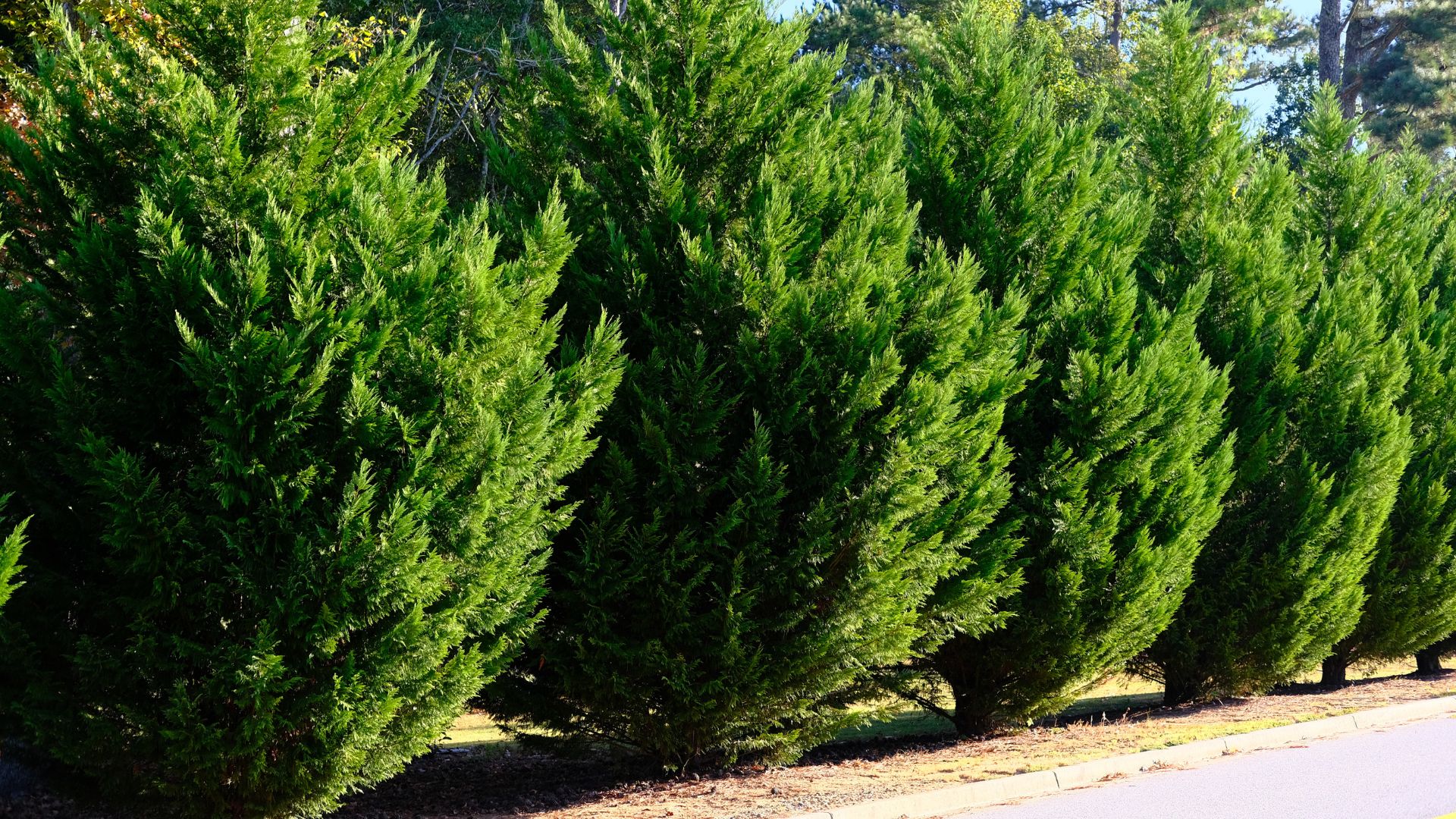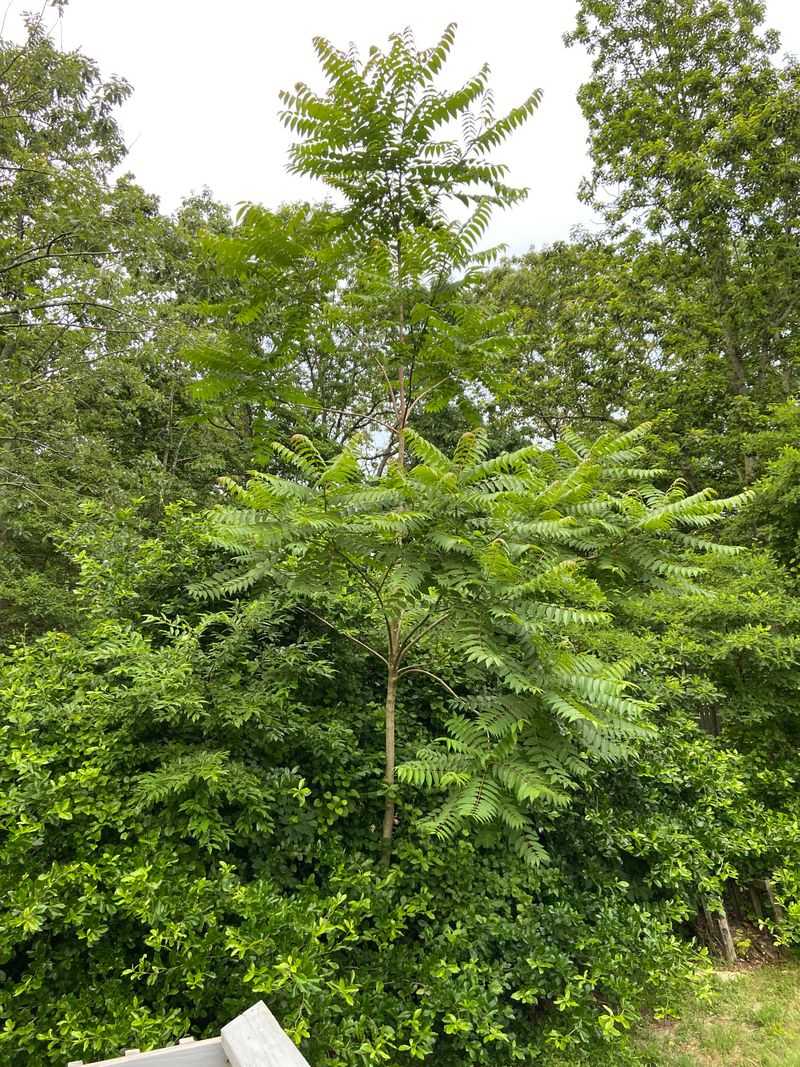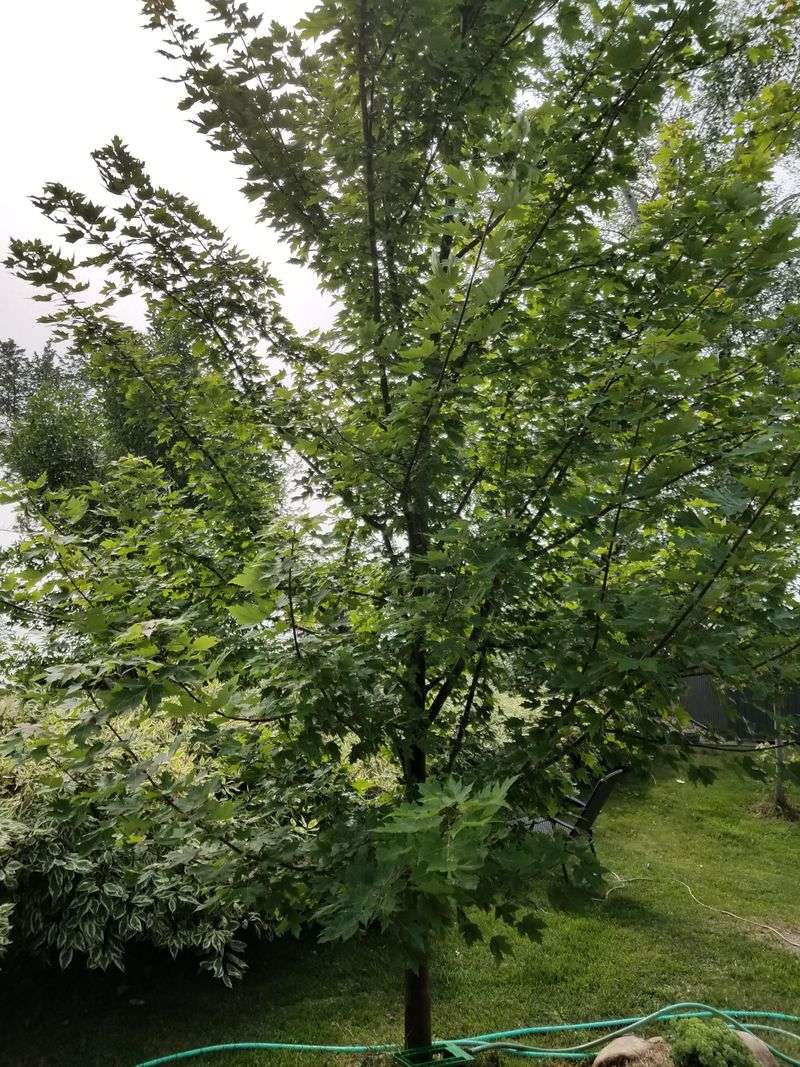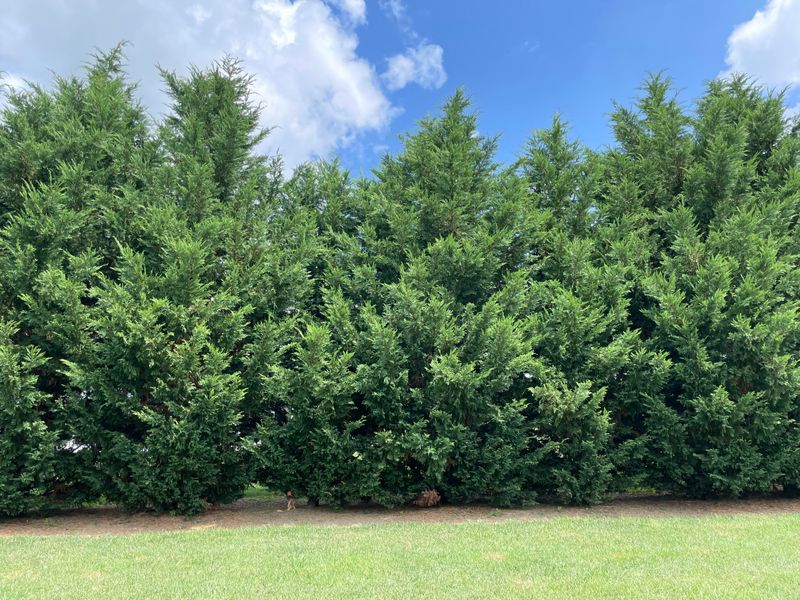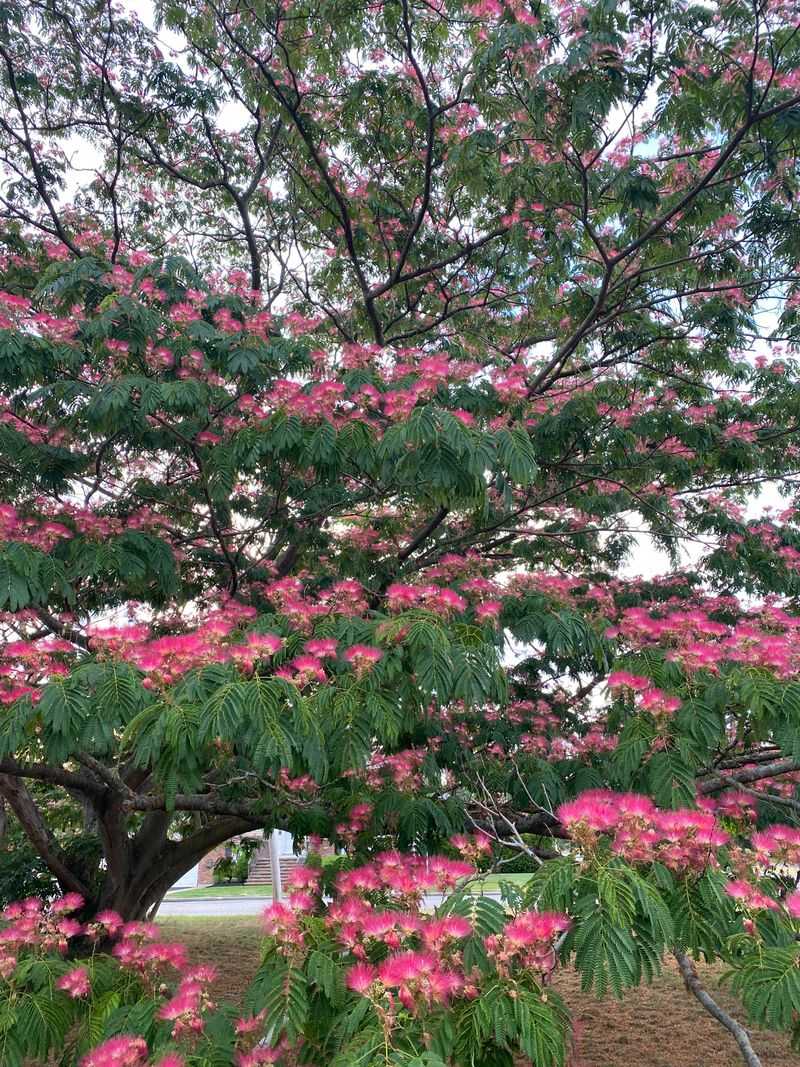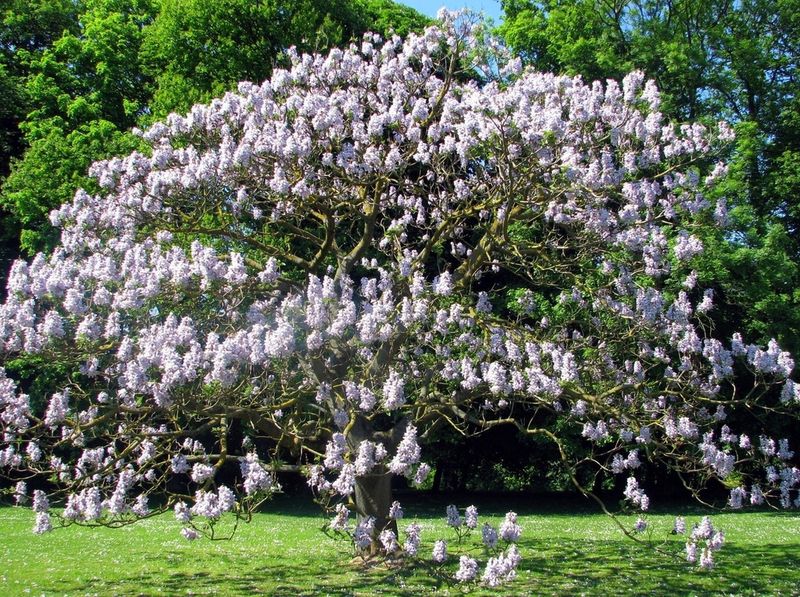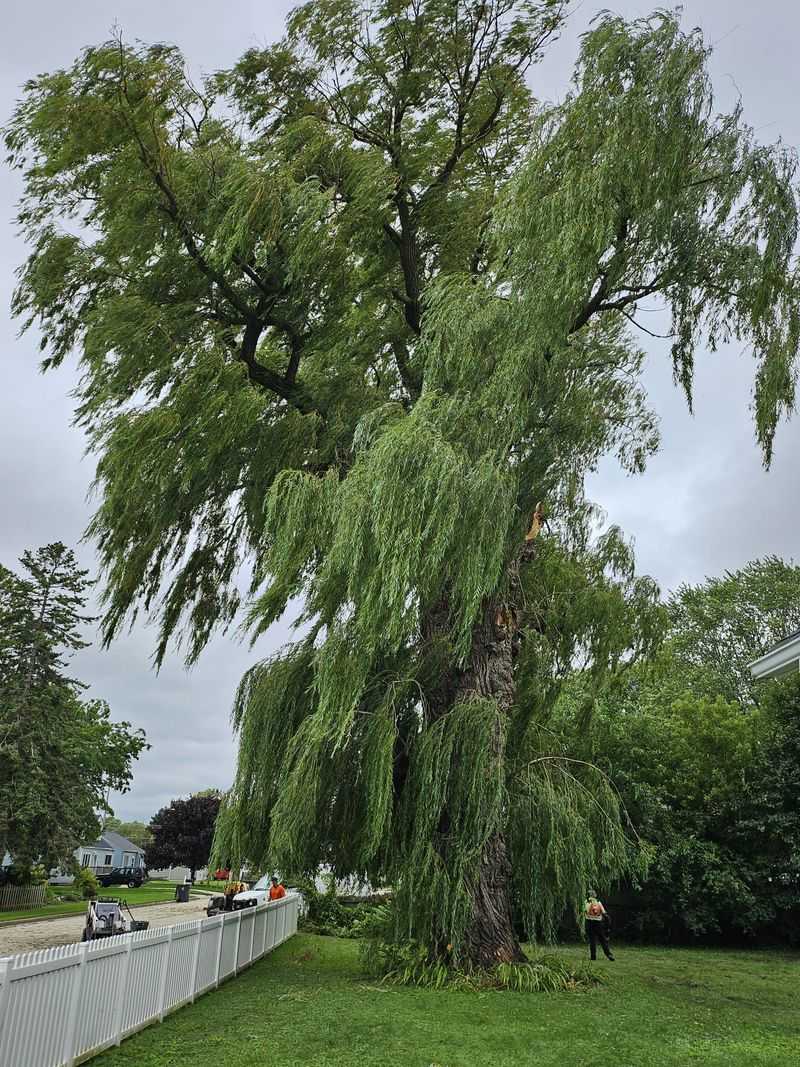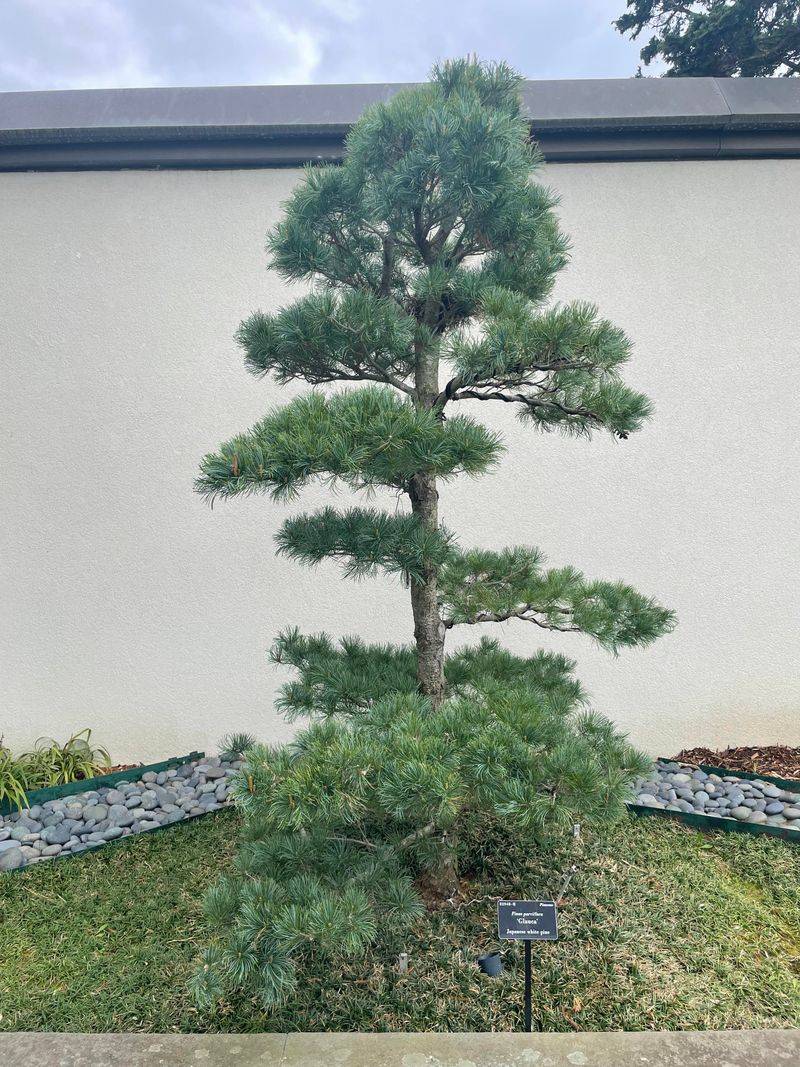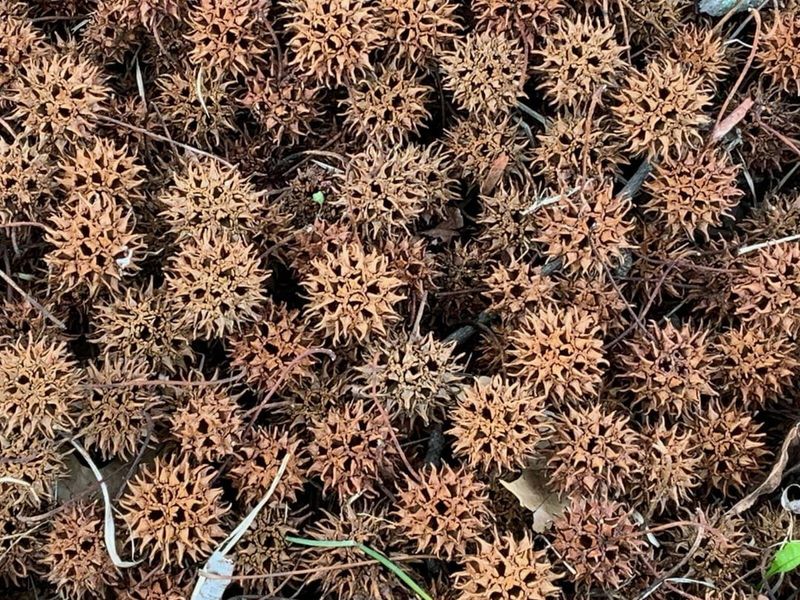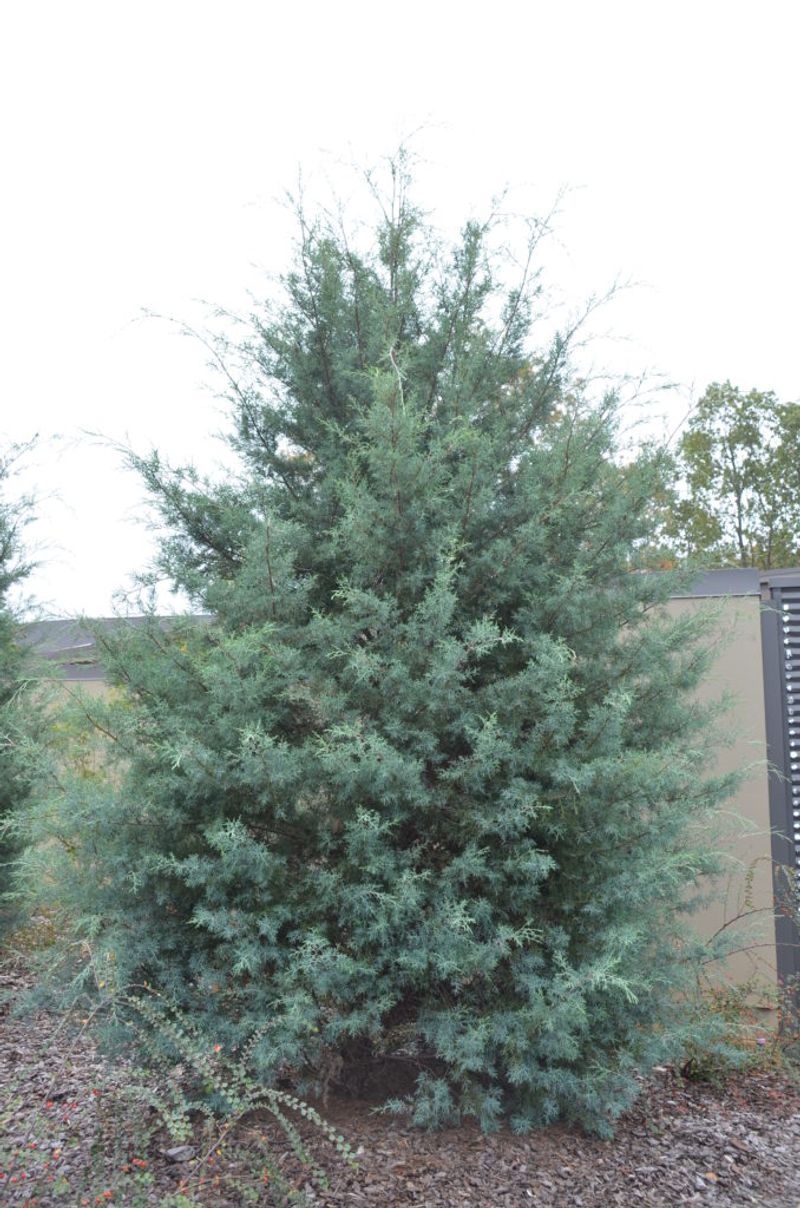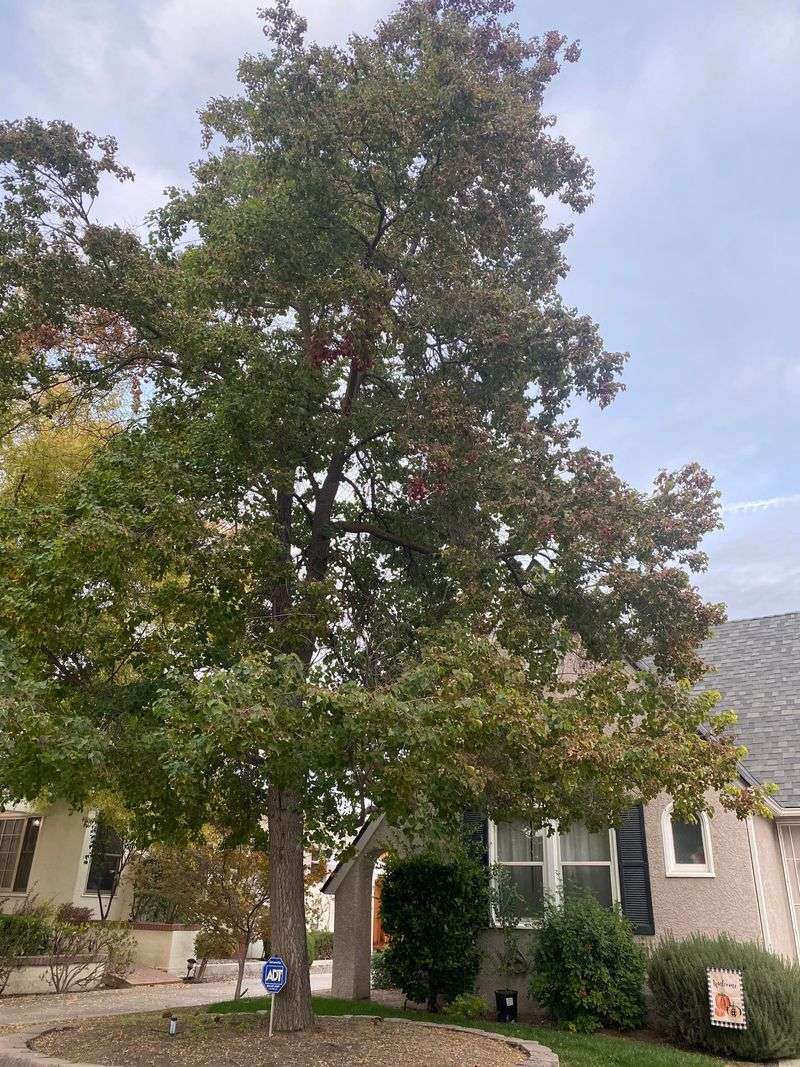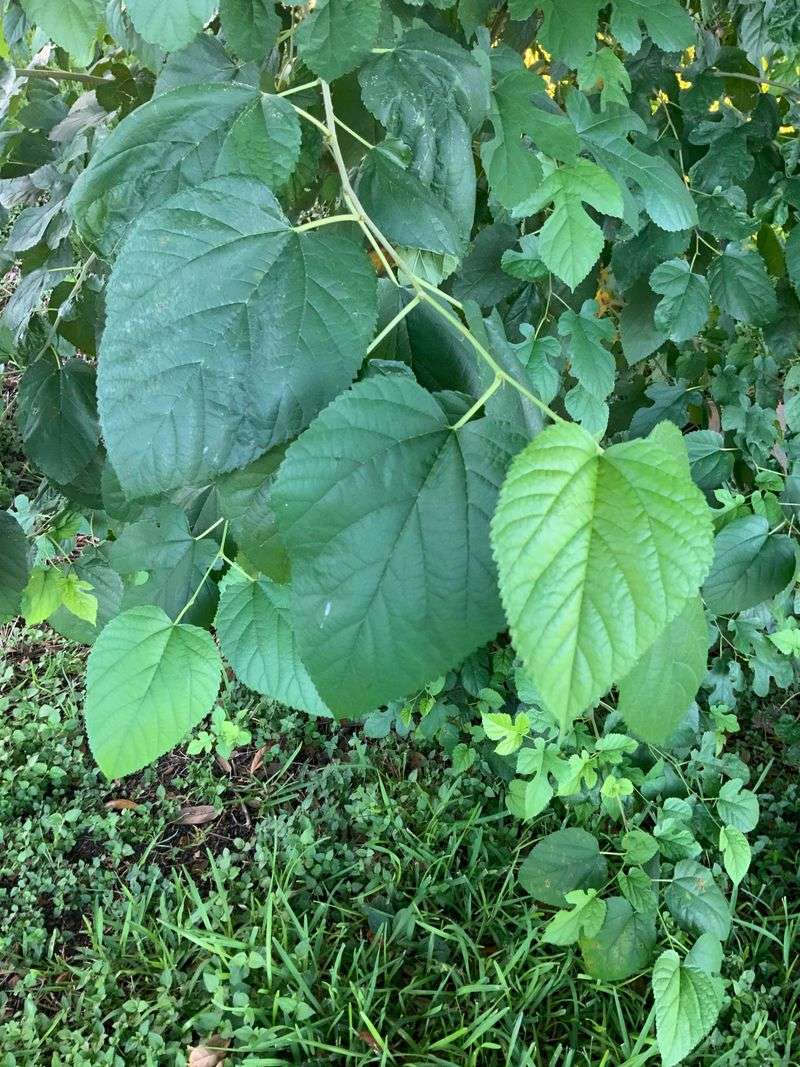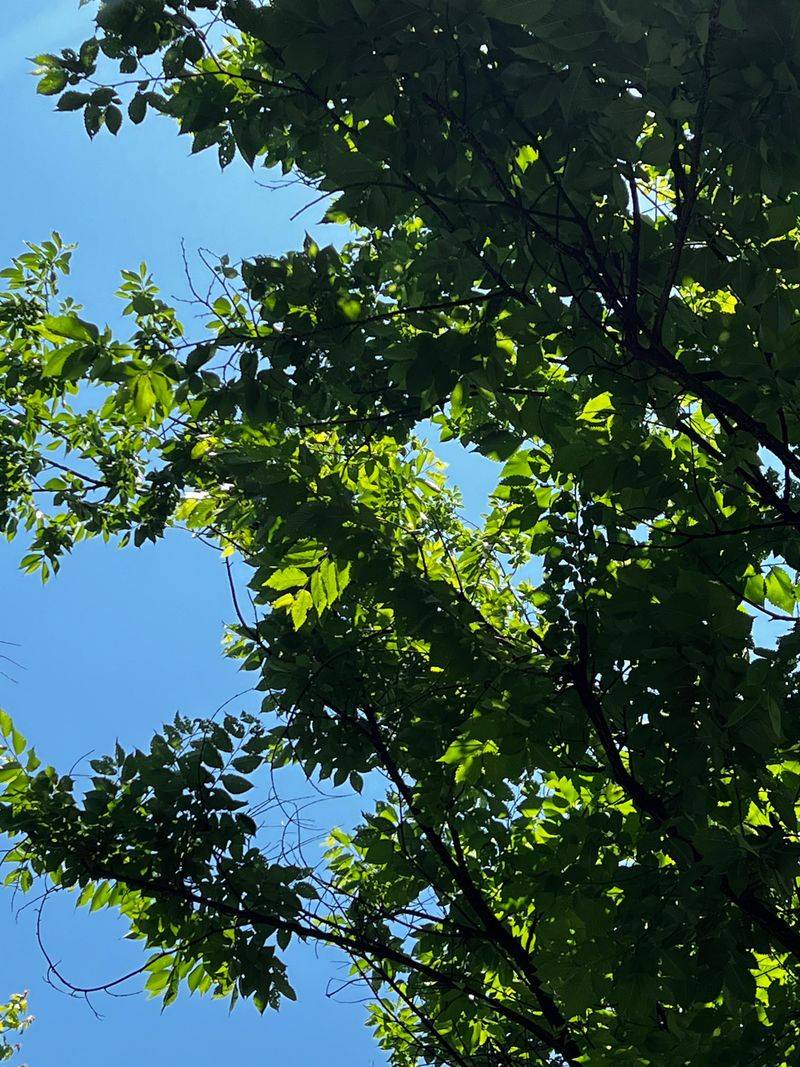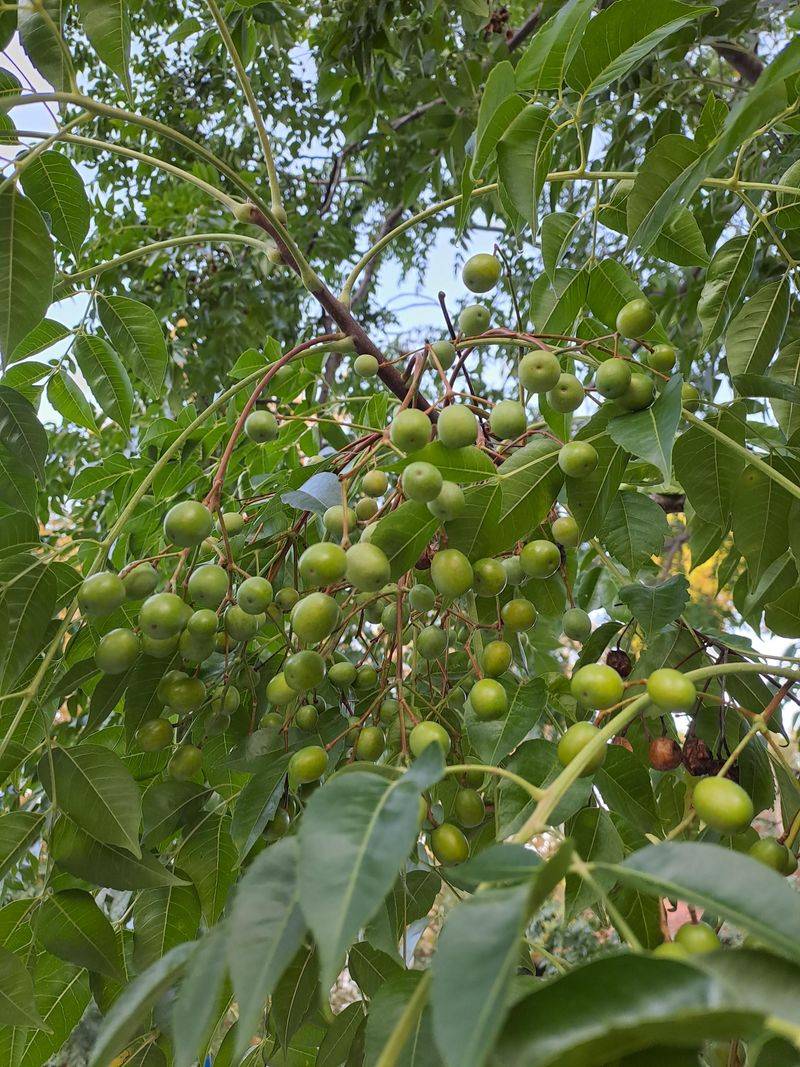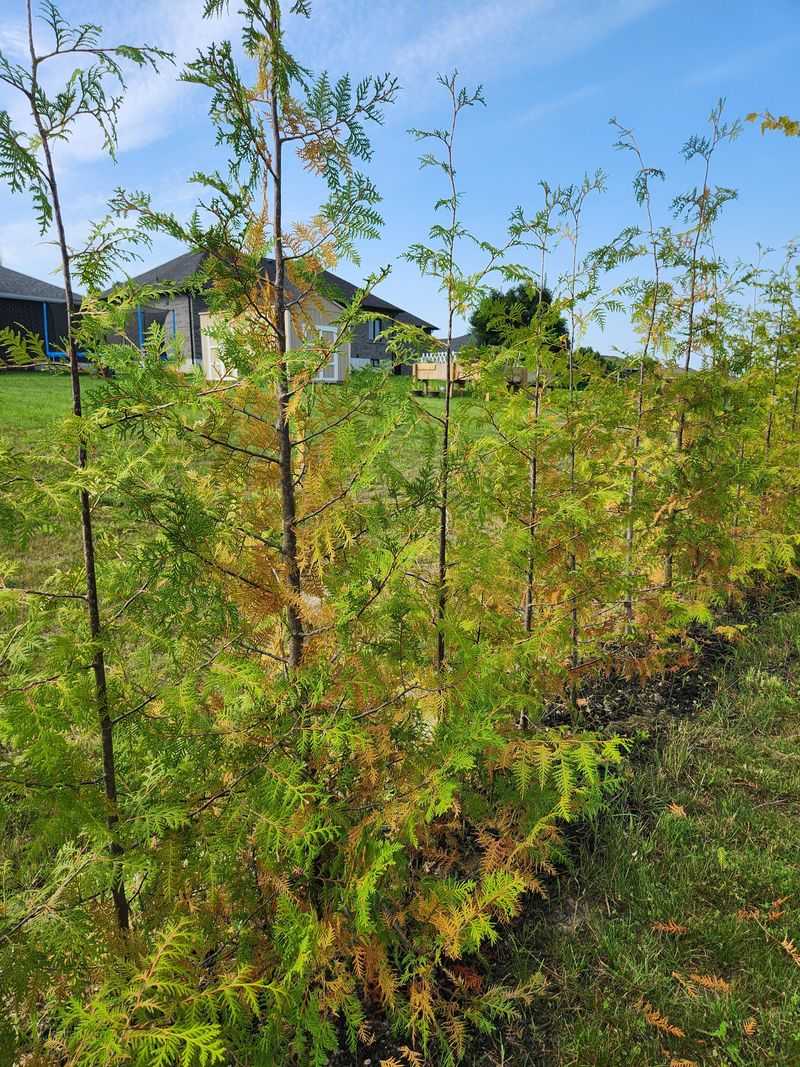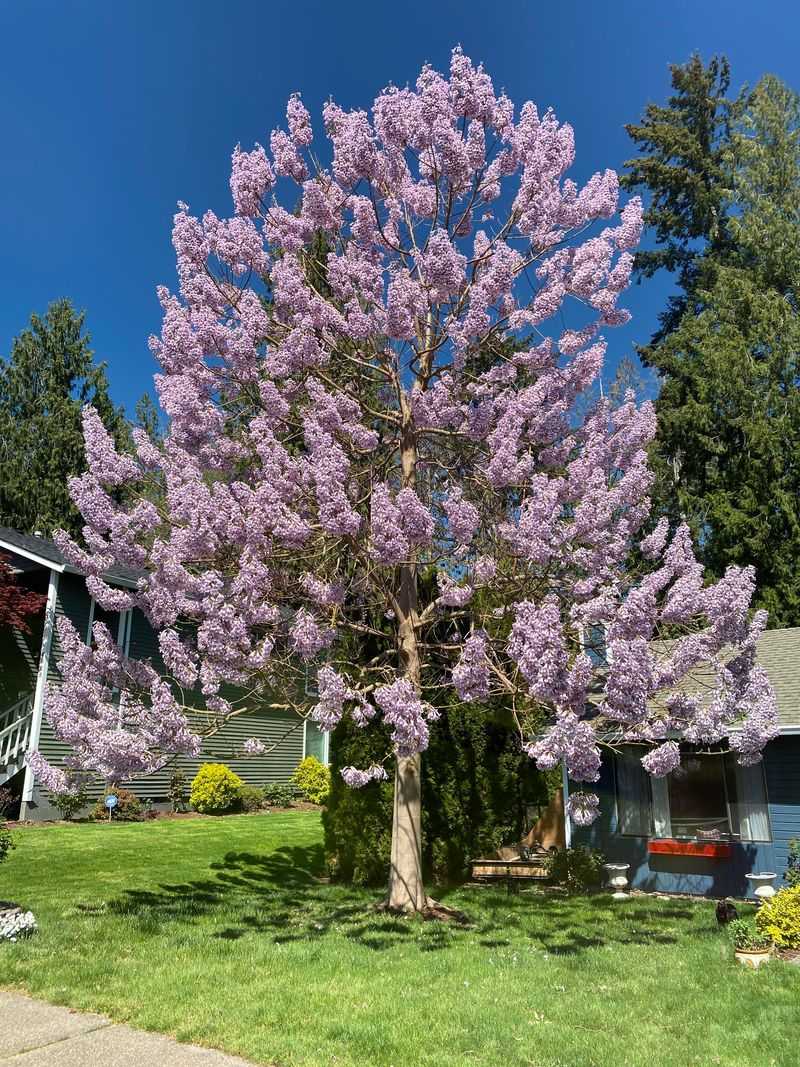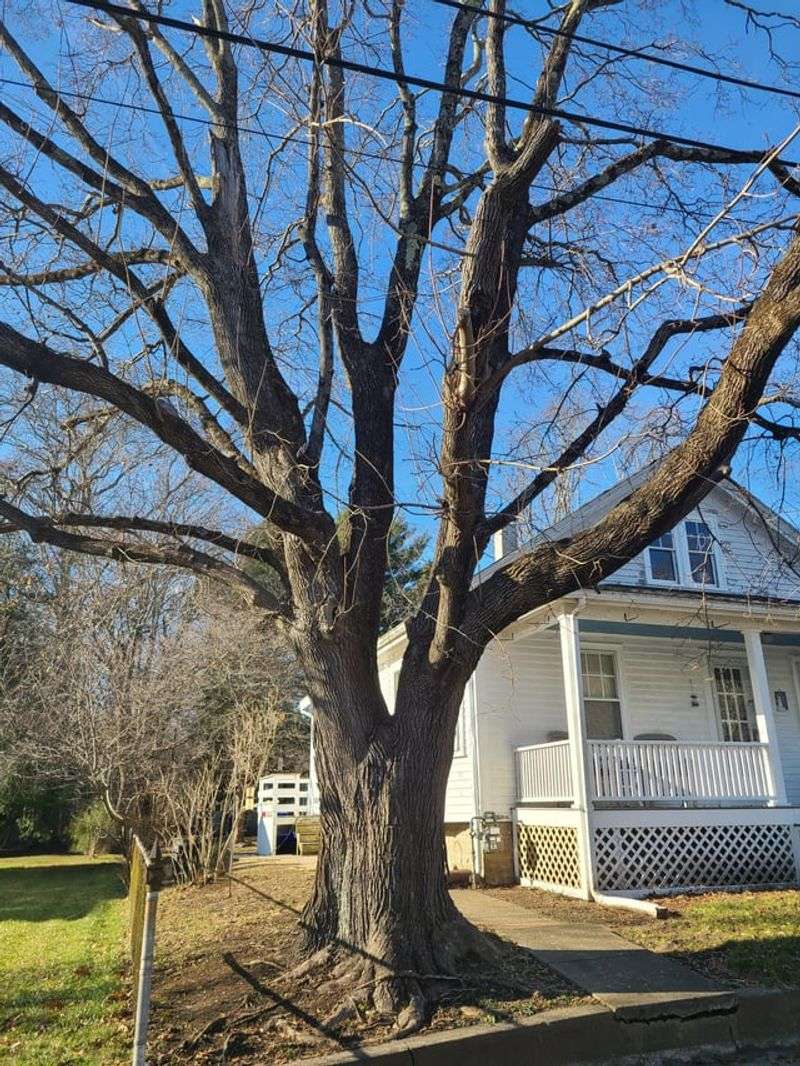When planting trees in Georgia’s red clay soil, choosing the right species can mean the difference between decades of shade and beauty or years of headaches and expensive removal.
Many homeowners are drawn to fast-growing varieties or exotic species without considering how these trees will interact with our humid climate, frequent storms, and unique pest pressures. As a Georgia homeowner myself, I’ve watched neighbors struggle with fallen limbs crushing fences after summer thunderstorms.
I’ve even had to remove a ‘bargain’ tree that quickly outgrew its space and threatened my foundation. Local landscapers consistently warn against certain species that might look appealing at the garden center but create endless problems down the road.
1. Bradford Pear
Despite their beautiful spring flowers, these trees are notorious for splitting apart after just 15-20 years. The weak branch structure simply can’t handle Georgia’s summer storms.
My neighbor’s Bradford Pear split right down the middle during a thunderstorm last April, crushing their newly installed garden beds. The cleanup cost them over $1,200.
Beyond structural issues, these trees have escaped cultivation and become invasive throughout Georgia, crowding out native species in natural areas. The flowers also emit an unpleasant fishy odor that can make spring outdoor gatherings uncomfortable.
2. Tree Of Heaven
Originally imported from China, this aggressive invader spreads rapidly through both seeds and root suckers. One tree can quickly turn into dozens across your property.
The roots release chemicals that prevent other plants from growing nearby, creating bare patches in your landscape. I’ve spent three summers trying to eliminate a single Tree of Heaven that appeared in my backyard.
Adding insult to injury, this species is the preferred host for spotted lanternfly, an invasive pest that damages many crops and trees throughout the Southeast.
3. Silver Maple
Fast growth comes at a price with Silver Maples. The wood is brittle and prone to breaking during Georgia’s frequent summer thunderstorms and occasional ice events.
Surface roots are another headache, often lifting sidewalks and making lawn maintenance difficult. My cousin had to replace her driveway after just eight years because a Silver Maple’s roots created a roller coaster of concrete.
While the quick shade seems appealing, you’ll likely spend more maintaining this tree than you would waiting a few extra years for a sturdier oak or maple variety to mature.
4. Leyland Cypress
Once a staple of Georgia privacy screens, these trees are plagued by multiple diseases in our humid climate. Seiridium canker and Botryosphaeria canker cause branches to brown and die, creating eyesores in what was meant to be a beautiful green wall.
During drought years, these thirsty trees struggle tremendously in Georgia’s clay soil. When planted too close together (as they often are), they compete for limited water and decline even faster.
After watching half my row of Leylands slowly die despite expensive treatments, I replaced them with more disease-resistant native alternatives.
5. Mimosa Tree
Those delicate pink powder-puff flowers hide a multitude of problems. Mimosas are highly susceptible to a fatal vascular wilt disease that’s widespread in Georgia, often killing trees within a few years of symptoms appearing.
Seedpods create a constant cleanup chore, and the seeds readily sprout everywhere – in flower beds, gutters, and even in foundation cracks. The shallow roots also make these trees prone to toppling in our summer storms.
After spending countless weekends pulling up hundreds of mimosa seedlings, I’ve learned to appreciate these trees only when they’re in someone else’s yard – preferably several blocks away.
6. Eucalyptus
Georgia’s occasional cold snaps make eucalyptus a risky choice despite their appealing fragrance and interesting bark. Most varieties suffer significant damage or death when temperatures drop below 20°F.
The oily nature of these trees makes them extremely flammable – a serious concern during our dry fall seasons. Fallen bark strips and leaves create constant yard maintenance throughout the year.
Several friends who planted eucalyptus as specimen trees lost them entirely during a particularly cold January. The replacements weren’t cheap, and the bare spot in their landscape took years to restore.
7. Princess Tree
Don’t be fooled by the royal name and pretty purple flowers. Princess trees (Paulownia tomentosa) grow at an alarming rate and produce thousands of windborne seeds that germinate readily throughout the landscape.
The large leaves become a cleanup nightmare in fall, and the brittle wood makes branches susceptible to breakage in Georgia’s unpredictable weather. The Georgia Forestry Commission considers these trees invasive pests.
My gardening club recently spent a volunteer day removing princess tree saplings from a local park – we pulled over 200 in just one small section, all from a single parent tree nearby.
8. Weeping Willow
Those graceful, sweeping branches come with aggressive roots that seek out water sources – including your irrigation lines, septic system, and underground pipes. Repairs can cost thousands of dollars once roots infiltrate these systems.
Willows drop small branches constantly, creating ongoing maintenance needs. During Georgia’s frequent summer storms, larger limbs often come down, potentially damaging structures.
After replacing my sewer line due to willow root invasion, I learned an expensive lesson about proper tree placement. Keep these water-lovers far from any underground utilities or foundations.
9. White Pine
While beautiful in cooler northern climates, White Pines struggle in Georgia’s heat and humidity. They’re particularly susceptible to pine bark beetles and other pests that thrive in our long summers.
The soft wood makes them prone to storm damage, with heavy snow or ice causing significant branch breakage. Even summer thunderstorms can snap the weak branches.
My parents planted three White Pines when they built their Atlanta home. Within a decade, all showed significant needle browning and dieback despite regular care. They eventually removed all three and replaced them with more heat-tolerant Southern natives.
10. Sweetgum
The spiky seed balls (“gumballs”) from these trees are the bane of barefoot Georgia summers. They cover lawns, clog mowers, and make walking hazardous from late fall through spring.
Removal services charge premium rates for sweetgums because the dense, interlocked grain makes them difficult to cut and process. The extensive root systems often damage sidewalks and driveways as trees mature.
My neighborhood has several mature sweetgums, and we’ve collectively invested in special rolling gumball collectors just to keep our yards usable. Think twice before planting a tree that requires special equipment just to manage its mess!
11. Arizona Cypress
Despite their beautiful blue-gray foliage, Arizona Cypress trees struggle with Georgia’s humidity and clay soil. They’re prone to multiple fungal diseases that cause unsightly branch dieback and eventual decline.
Root rot is particularly common when these trees are planted in Georgia’s poorly-draining clay soils. After heavy rain periods, these trees often show signs of stress or sudden death.
A landscape designer friend stopped recommending them after losing over 60% of her installations within five years. The replacements cost her company thousands and damaged her reputation with clients who wanted long-lasting trees.
12. Chinese Tallow
Known locally as “popcorn trees” for their white seed coverings, Chinese Tallow trees are among Georgia’s most invasive species. Birds spread the seeds everywhere, creating ecological nightmares in natural areas.
The milky sap can cause skin irritation for many people, making pruning and removal challenging. Fall color is attractive, but brief compared to the year-round problems these trees create.
Georgia’s Department of Natural Resources spends significant resources fighting these invaders in wild areas. By avoiding them in our landscapes, we prevent further spread into forests and wetlands where they displace native species.
13. Paper Mulberry
Aggressive doesn’t begin to describe the growth habit of Paper Mulberry. These Asian imports spread rapidly through root suckers, quickly forming thickets that are nearly impossible to eliminate completely.
The fuzzy leaves and stems can cause skin irritation for many people. Fruit drops create slippery, staining messes on driveways and patios throughout summer.
My neighbor’s battle with a single Paper Mulberry has lasted over five years. Despite professional removal of the original tree, suckers continue emerging throughout their yard and even into adjacent properties, creating neighborhood tension and ongoing expenses.
14. Black Walnut
While the wood is valuable, Black Walnut trees produce compounds that are toxic to many garden plants, creating dead zones where nothing else will grow. The falling nuts stain driveways and patios and can damage mower blades.
Harvesting the nuts is labor-intensive, requiring removal of the messy green husks that stain hands and clothing. Squirrels love planting them throughout your yard, creating unwanted saplings everywhere.
After watching my grandmother’s garden struggle beneath her neighbor’s Black Walnut, I learned to appreciate these magnificent trees only in large rural properties where their allelopathic effects won’t ruin landscape investments.
15. Siberian Elm
Often mistaken for a native elm, these fast-growing trees have weak wood that breaks easily in Georgia’s ice storms and summer thunderstorms. The branches seem to snap at the slightest provocation.
Seeds produce thousands of unwanted seedlings that sprout in flower beds, gutters, and cracks in pavement. The trees are also susceptible to numerous diseases and insect pests in our climate.
After cleaning up branches from my elderly aunt’s Siberian Elm after every storm, we finally convinced her to remove it before it could fall on her house. The removal cost was significant, but the peace of mind was worth every penny.
16. Chinaberry
Once planted as a fast-growing shade tree, Chinaberry has proven to be one of Georgia’s most problematic invasive species. Birds spread the seeds far and wide, creating ecological damage in natural areas.
The fruits are toxic to humans and some animals, creating hazards in yards where children play. Fallen berries create slipping hazards on walkways and stain concrete surfaces.
A friend’s rural property came with several mature Chinaberries, and despite removing them, he’s still finding seedlings throughout his five acres years later. The ongoing battle requires vigilance and regular monitoring to prevent reinfestation.
17. Eastern White Cedar
Though not as problematic as Leyland Cypress, Eastern White Cedars still struggle with Georgia’s humidity and clay soils. Bagworms frequently infest these trees, requiring regular insecticide treatments to maintain appearance.
The dense growth pattern collects ice and snow in winter storms, causing branches to break under the weight. Interior branches often die as the tree matures, creating brown patches in what was meant to be a solid privacy screen.
When my subdivision’s entrance was replanted after bagworms destroyed the original cedars, the HOA specifically prohibited replanting with the same species to avoid repeating the expensive mistake.
18. Empress Tree
Also called Royal Paulownia, these trees grow at an astonishing rate – sometimes 15 feet in a single season. This rapid growth creates weak wood that’s highly susceptible to breakage in Georgia’s unpredictable weather.
Massive heart-shaped leaves create substantial cleanup challenges in fall. The prolific seed production means you’ll be pulling seedlings from your garden beds for years to come.
During a home inspection, I watched a potential buyer walk away from a house solely because of the massive Empress tree looming over the roof. The risk of storm damage and ongoing maintenance needs were deal-breakers for an otherwise perfect property.
19. Norway Maple
The dense shade cast by Norway Maples makes growing grass or other plants underneath nearly impossible, creating bare, eroded soil in many Georgia yards. Their shallow roots compete aggressively with other landscape plants for water and nutrients.
Fall cleanup is particularly challenging as the large leaves tend to fall all at once, often when still green after an early frost. The seeds sprout readily, creating unwanted saplings throughout the landscape.
After struggling for years to grow anything under my Norway Maple, I finally replaced it with a native alternative that plays more nicely with surrounding plants while still providing ample shade for our hot Georgia summers.

